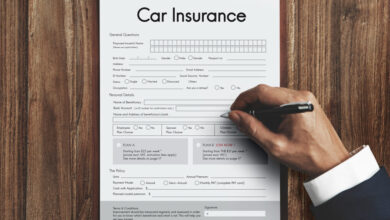Navigating Average Car Insurance for 23 Year Olds: Your Ultimate Guide.
When you make a purchase using links on our site, we may earn an affiliate commission. Read More.
If you’re a 23-year-old gearing up for life’s adventures, one thing you can’t ignore is car insurance.
We get it – it might not be the most exciting topic, but it’s essential to understand how it works and how to get the best deals.
In this guide, we’ll break down everything you need to know about average car insurance for 23 year olds, from the basics to money-saving tips.
Quick Look:
- If you’re 23 and own a car, you need insurance.
- And, your age affects how much you pay for coverage.
- They (your chosen insurance company) consider factors like your driving record and location.
- Or, you can save by shopping around and choosing the right coverage.
The Ultimate Guide to Average Car Insurance for 23 Year Olds
Why Does Age Matter?
At 23, your car insurance rates are influenced significantly by your age. Insurance providers often consider younger drivers, like yourself, as higher risk due to limited driving experience.

As a result, premiums may be higher compared to older drivers. Let’s explore the reasons behind this age-based pricing and how you can manage it.
Factors That Affect Your Premiums
Your age is just one piece of the puzzle when it comes to car insurance rates. Insurers take into account several factors that can impact your premiums.
From your driving record and location to your credit score and the type of coverage you choose, understanding these factors empowers you to take control of your insurance costs.
Types of Car Insurance for 23-Year-Olds

Understanding the various types of car insurance is essential for making the right choices. As a 23-year-old, you have several options to consider:
1. Liability Insurance: This is the most basic form of car insurance and is typically required by law. It covers damage and injuries you may cause to others in an accident. There are two main components:
- Bodily Injury Liability: This covers medical expenses and legal fees if you injure someone in an accident.
- Property Damage Liability: Pays for damages to someone else’s property, such as their car or a building.
2. Collision Coverage: This type of insurance covers damage to your vehicle caused by colliding with another car or object, regardless of fault. It’s especially useful if you have a new or valuable car.
3. Comprehensive Coverage: Comprehensive insurance protects your car from damage not related to collisions. It covers theft, vandalism, natural disasters, and hitting an animal, among other things.
4. Uninsured/Underinsured Motorist Coverage: If you’re involved in an accident with a driver who doesn’t have insurance or lacks sufficient coverage, this insurance helps cover your medical expenses and vehicle repairs.
5. Personal Injury Protection (PIP) or Medical Payments Coverage: These cover medical expenses for you and your passengers in the event of an accident, regardless of fault. PIP also covers lost wages and other related costs.
6. Gap Insurance: If you’re financing or leasing your car, gap insurance is crucial. It covers the difference between the car’s actual cash value and what you owe on your loan or lease if your car is totaled or stolen.
7. Usage-Based Insurance: Some insurers offer usage-based insurance programs that track your driving habits using telematics devices or smartphone apps. Safer driving habits can lead to lower premiums.
8. Classic Car Insurance: If you own a classic or vintage car, you might consider specialized classic car insurance. It’s designed to protect the unique needs of these vehicles.
9. Rental Reimbursement: This optional coverage helps pay for a rental car while yours is being repaired after an accident.
10. Towing and Labor Coverage: This coverage reimburses you for emergency roadside assistance, such as towing, flat tire repair, or battery jump-starts.
Before selecting a specific type of coverage, assess your needs, budget, and the value of your car. It’s crucial to strike a balance between adequate coverage and affordability.
Many 23-year-olds opt for liability insurance as a starting point, but your individual circumstances may warrant additional coverage for peace of mind on the road.
The best car insurance companies for 23-year-olds
The best car insurance companies for 23-year-olds, along with their average annual premiums:
| Company | Average Annual Premium |
|---|---|
| USAA | $1,822 |
| Geico | $1,970 |
| Progressive | $2,069 |
| Erie | $2,231 |
| State Farm | $2,280 |
These rates are based on a 23-year-old male driver with a clean driving record and good credit. Your rates may vary depending on your individual circumstances.
Tips to Save on Car Insurance

Car insurance costs can be a significant expense, especially for 23-year-olds. Here are some practical steps to help you reduce your insurance expenses without sacrificing coverage:
1. Shop Around: Don’t settle for the first insurance quote you receive. Different insurance companies offer varying rates, so it pays to compare prices.
Use online comparison tools to easily get multiple quotes and find the best deal.
2. Bundle Policies: Consider bundling your car insurance with other policies, such as renters or homeowners insurance, from the same provider.
Bundling often results in significant discounts on all your policies.
3. Increase Deductibles: Your deductible is the amount you pay out of pocket before your insurance kicks in.
Choosing a higher deductible can lower your monthly premiums. Just be sure you have the means to cover the deductible if you need to make a claim.
4. Maintain a Clean Driving Record: Safe driving pays off. Avoid accidents and traffic violations, as a clean driving record can lead to lower insurance rates.
Some insurers also offer discounts for safe driving habits, so inquire about potential programs.
5. Take Defensive Driving Courses: Completing a defensive driving course not only enhances your skills but can also earn you a discount on your car insurance.
Check with your insurer to see if they offer such incentives.
6. Opt for a Safe, Practical Car: The type of car you drive plays a significant role in your insurance rates. Choose a vehicle with a high safety rating and a lower risk of theft.
Sports cars and luxury vehicles typically have higher insurance costs.
7. Maintain Good Credit: Surprisingly, your credit score can affect your insurance premiums. Insurance companies may use your credit score as a factor in determining your rates.
Maintaining good credit can help you qualify for lower premiums.
8. Ask About Discounts: Insurance providers often offer various discounts.
These can include good student discounts, multi-policy discounts, loyalty discounts for staying with the same insurer, and discounts for safety features in your car.
9. Pay Your Premium Annually: If you can afford it, consider paying your insurance premium annually instead of monthly. Many insurers offer a discount for annual payments.
10. Review and Adjust Your Coverage: As your circumstances change, so do your insurance needs. Periodically review your coverage and adjust it accordingly.
If your car’s value has depreciated significantly, you may not need as much coverage as before.
By implementing these practical steps, you can effectively reduce your car insurance expenses while maintaining the protection you need on the road.
Remember that every individual’s situation is unique, so it’s essential to tailor your insurance coverage to your specific needs and budget.
FAQs About Average Car Insurance for 23 Year Olds
Can I get car insurance at 23?
Yes, absolutely! At 23, you are eligible and required to have car insurance if you own and drive a car.
Why do 23-year-olds pay more for car insurance?
Insurance companies often view younger drivers as higher risk due to limited experience, which can lead to higher premiums.
What factors, besides age, affect my insurance rates?
Several factors impact your rates, including your driving record, location, credit score, and the type of coverage you select.
How can I lower my car insurance costs?
You can save by shopping around for quotes, maintaining a clean driving record, exploring discounts, and considering higher deductibles.
What’s the best type of car insurance for a 23-year-old?
The best type depends on your needs, but liability and comprehensive coverage are popular choices for young drivers.
Conclusion
Navigating car insurance at 23 may seem like uncharted territory, but armed with the knowledge from this guide, you’re well-prepared to make the right choices.
Remember, while your age does impact your insurance rates, there are factors within your control that can help you secure affordable coverage.
By understanding how insurance companies assess risk, choosing the right type of coverage, and implementing money-saving strategies, you can drive with confidence and financial peace of mind.
Car insurance isn’t just a legal requirement; it’s your safety net on the road, protecting both you and your wallet.
As you embark on your journey as a responsible driver, keep these tips in mind, shop around for the best deals, and always prioritize safety.
Your adventure awaits, and with the right insurance, you’re ready for whatever the road brings your way. Safe travels!








